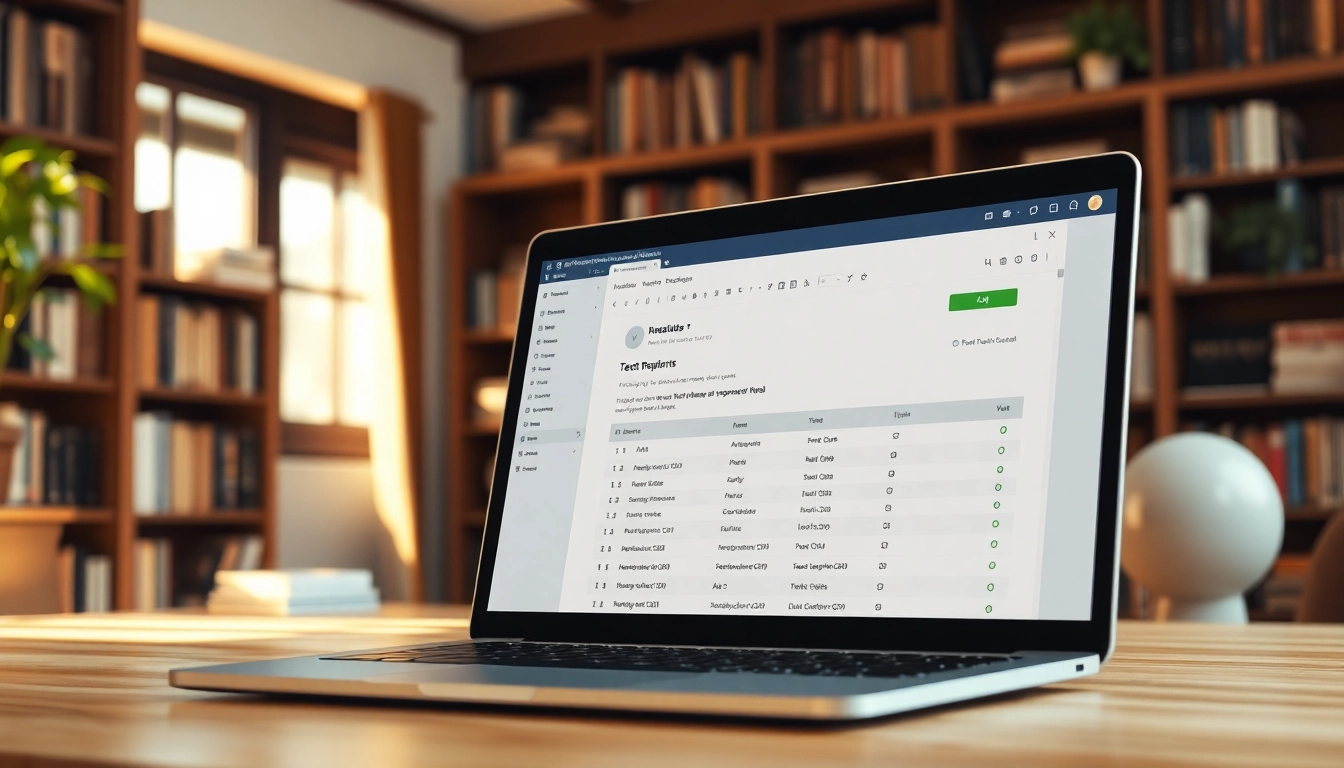Understanding Plagiarism and Its Implications
What is Plagiarism?
Plagiarism is the act of using someone else’s work, ideas, or intellectual property without proper attribution, presenting it as one’s own. This misuse can occur in various forms, whether it be copying text, paraphrasing without credit, or claiming ownership of creative works such as art, music, and designs. In a digital age where information is easily accessible, understanding the nuances of plagiarism is pivotal for students, professionals, and content creators alike.
Common Types of Plagiarism
There are several common types of plagiarism that individuals should be aware of:
- Direct Plagiarism: This involves copying someone else’s work word for word without quotation marks or citation.
- Self-Plagiarism: This occurs when someone reuses their previously published work without citation or permission, often in different publications or settings.
- Improper Paraphrasing: This is when an individual rewrites a source’s ideas without proper acknowledgment, making it seem like original work.
- Mosaic Plagiarism: This form mixes copied material from multiple sources, integrating it into one’s work without proper citation.
- Accidental Plagiarism: Sometimes, individuals may inadvertently fail to cite sources or misremember the original phrasing, resulting in unintentional plagiarism.
Consequences of Plagiarism in Academia
The consequences of plagiarism in academic settings can be severe. They may include:
- Academic Penalties: Students caught plagiarizing can face sanctions that range from failing the assignment to expulsion from their institution.
- Legal Repercussions: Plagiarism can also lead to copyright infringement cases, resulting in fines or other legal penalties.
- Reputational Damage: For academics and professionals, being associated with plagiarism can significantly damage their credibility and career prospects.
- Lack of Learning: Engaging in plagiarism hampers the educational process, preventing individuals from developing critical thinking and writing skills.
Importance of a Plagiarism Checker in Writing
How Plagiarism Checker Enhances Academic Integrity
Utilizing a plagiarism checker is essential in promoting academic integrity. These tools assist in ensuring that all submissions are original, fostering a culture of honesty and ethical scholarship. By identifying potential issues before submission, students and scholars can correct mistakes, enhance the quality of their work, and adhere to ethical standards.
Benefits of Using a Plagiarism Checker for Writers
Writers, regardless of their experience level or field, benefit from using plagiarism checkers in several ways:
- Quality Assurance: These tools provide a level of quality control, ensuring that the content meets originality standards.
- Saves Time: By quickly identifying potential plagiarism issues, writers can dedicate more time to revising and improving their work rather than worrying about citation accuracy.
- Learning Tool: Many plagiarism checkers also offer insights into proper citation practices, helping writers learn and improve over time.
- Enhanced Credibility: Regular use of plagiarism checkers builds trust with editors, publishers, and academic institutions, establishing a writer’s reputation as a credible source.
Understanding Originality Scores
Most plagiarism checkers provide an originality score that indicates the percentage of text that is original compared to the total content analyzed. This score helps users gauge the uniqueness of their writing and make necessary adjustments. Understanding this metric is crucial for writers aiming to meet specific academic or publication standards, allowing them to strive for a higher level of originality in their work.
How to Choose the Right Plagiarism Checker
Key Features to Look For
When selecting a plagiarism checker, it is essential to consider several key features:
- Comprehensive Database: Ensure that the tool accesses a vast database, including academic journals, online documents, and various formats, to provide thorough results.
- Real-Time Analysis: Look for tools that can analyze text in real-time, allowing for immediate feedback and revisions.
- Multiple File Formats Support: A versatile checker that accepts various document types (e.g., PDF, Word, text) increases usability.
- User-Friendly Interface: An uncomplicated and intuitive interface helps users effectively navigate the tool without a steep learning curve.
Comparative Analysis of Plagiarism Checker Tools
Conducting a comparative analysis of various plagiarism checkers can provide users with a clear understanding of their options. Factors to consider in this analysis include:
- Accuracy: Some tools excel in detecting nuanced similarities, while others may miss subtle instances of plagiarism.
- User Reviews and Feedback: Exploring user testimonials and reviews can provide insight into the effectiveness and reliability of each tool.
- Cost-Friendliness: Comparing the pricing structures can help identify tools that offer good value for money, especially for students or occasional users.
- Customer Support: Quality customer support can significantly enhance the user experience, especially for those unfamiliar with plagiarism detection technologies.
Cost Considerations and Free vs Paid Options
Plagiarism checkers come in both free and paid versions, each with distinct advantages and limitations. Free options may provide basic functionality, while paid services often offer advanced features, larger databases, and more detailed reports. When deciding between free and paid options, consider:
- Your frequency of use: If plagiarism checking is a routine part of your work, investing in a paid version may be worthwhile.
- The importance of detailed reports: Paid versions typically offer comprehensive analyses and insights.
- Your budget constraints: There are various price points available, enabling users to find a suitable solution depending on their financial situation.
Practical Steps for Using a Plagiarism Checker
How to Effectively Use a Plagiarism Checker
Using a plagiarism checker effectively involves several important steps:
- Select The Right Tool: Choose a checker that meets your specific needs based on the considerations mentioned earlier.
- Prepare Your Document: Ensure your document is formatted correctly and free of unnecessary elements that might interfere with the checker’s performance.
- Run the Check: Input your text into the plagiarism checker and initiate the analysis.
- Review the Results: Examine the highlighted areas for potential matches and consider how to address them.
- Revise Accordingly: Make necessary changes to enhance originality, incorporating proper citation where needed.
- Re-Check, If Necessary: After revisions, it may be beneficial to run the text through the checker again to ensure all issues have been addressed.
Interpreting the Results of a Plagiarism Checker
Understanding the results from a plagiarism checker is crucial for efficient revisions. Typically, results include:
- Percentage of Similarity: A score displaying how much of the text is found to be similar to existing sources.
- Highlighted Matches: Specific sections of text that match with published works, aiding in identifying what needs to be revised or cited.
- Source Listings: Links or references to the sources where content matches occurred, allowing for verification and citation.
Common Mistakes When Using a Plagiarism Checker
To maximize the effectiveness of plagiarism checking, it’s essential to avoid common pitfalls:
- Neglecting to Revise: Running a plagiarism check without making the necessary changes afterwards can lead to repeated issues in future submissions.
- Ignoring Context: Sometimes, text may match existing sources due to common phrases; interpreting these in context is crucial.
- Over-Reliance on Software: Plagiarism checkers are tools, and human judgment is still needed to analyze results effectively.
Future Trends and Technology in Plagiarism Detection
AI Integration in Plagiarism Checkers
The integration of artificial intelligence into plagiarism detection technologies is one of the most exciting trends shaping the future of these tools. AI can enhance plagiarism checkers by providing more advanced algorithms that improve accuracy in detecting nuanced forms of plagiarism, adapt to different writing styles, and offer better feedback for revisions. As AI continues to evolve, we can expect even more sophisticated detectors that remain indispensable for writers and academic professionals.
Advancements in Algorithmic Precision
Future developments are likely to focus on improving the algorithmic precision of plagiarism detection tools. This involves refining the algorithms that underpin the functionality of these checkers to minimize false positives and enhance the identification of less obvious forms of plagiarism, such as ideas that are paraphrased poorly. This advancement will empower users to create high-quality, original content more reliably.
Potential Challenges Ahead for Plagiarism Checkers
Despite the advancement of technology in plagiarism detection, challenges remain. As access to information improves, so do the techniques for bypassing detection systems, leading to evolving methods of plagiarism that checkers must be prepared to address. Additionally, the ever-growing volume of content on the internet poses a challenge for databases, requiring continuous updates and expansions to remain effective.



